PRESTO PLANS
Sent straight to your inbox
CLICK HERE TO ACCESS
Sign up to receive 10 ready-to-use ELA resources your students will love!
10 FREE ELA RESOURCES
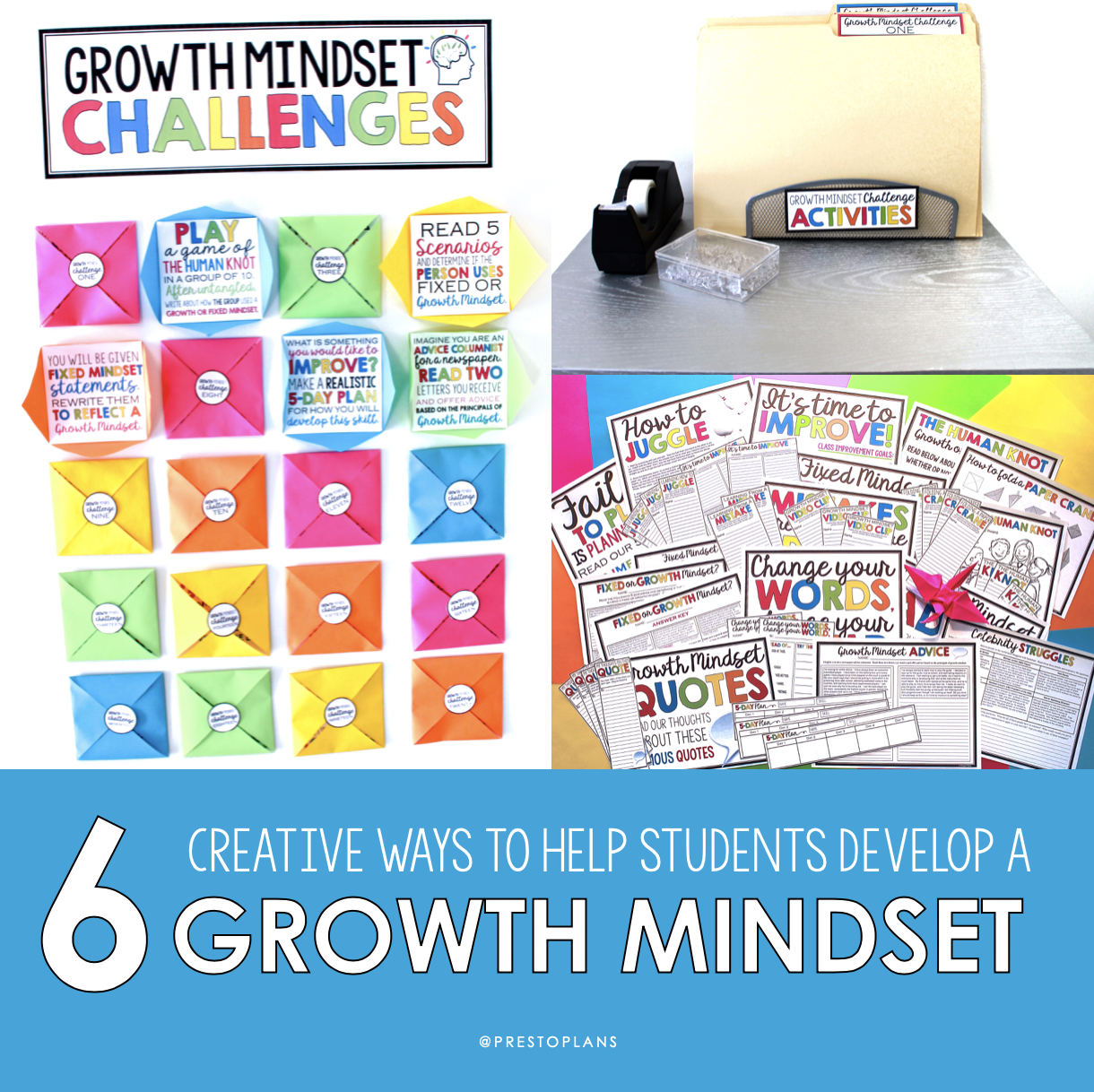
6 Creative Ways to Help Your Students Develop a Growth Mindset
Growing up, did you ever have a fixed mindset? Did you ever think that your level of talent, intelligence, or even your personality could not be changed over time? This way of thinking is not uncommon. As a teacher, you likely see this within your own classroom and are looking for ways to instill a growth mindset, the more productive counterpart of fixed mindset, in your students. Whether a student has a fixed mindset or a growth mindset is a defining factor in their overall learning experience. Because of this, it’s important to integrate growth mindset into your curriculum and to reiterate its value to your students. Below are 6 ways to encourage this kind of thinking in the classroom.
What is growth mindset?
The concept of growth mindset was developed by Carol Dweck, a Stanford University psychology professor known for her research on growth and development. Dweck found that students with a growth mindset believe that their abilities can be developed through dedication and hard work. On the other hand, those who have a fixed mindset believe that their basic abilities such as their talent or intelligence are fixed traits that cannot be developed in any meaningful way.
Those with a fixed mindset believe that talent alone creates success and tend to spend their time documenting their talent or intelligence rather than putting in a concerted effort to develop them. Those with a growth mindset understand that the brains and talents they possess are merely building blocks for what they are capable of achieving. They don’t see failure as evidence of unintelligence or as a reason to throw in the towel, but as a springboard for growth.
So, how can we set our students up for success with growth mindsets?
1. Classroom Environment
When it comes to developing growth mindsets in your students, a positive classroom environment is key. Surround your students with the growth mindset values you wish for them to embrace. One way to do this is by sharing quotes that encourage growth mindset from famous and influential people in history. Hang these growth mindset posters on your wall. I include a picture of the individual with a brief explanation of their contribution to society.
You can even turn these into an assignment by getting your students to reflect on each of the quotes in a written response. Soon, your students will start to internalize the values of growth mindset present in their favorite quotes. Here are a few of the quotes I use for this:
- “Only in the darkness can you see stars.” – Martin Luther King Jr.
- “You must do the things you think you cannot do.” – Eleanor Roosevelt
- “The most effective way to do it is to do it.” – Amelia Earhart
2. Using Growth Mindset Language
In the same way that how you speak to your children often becomes their inner voice, so it is with your students pertaining to mindset. By utilizing language that reflects the importance of resilience and perseverance, they will eventually become familiar with it, and may even learn to recognize when they are exhibiting a fixed mindset themselves.
Explain how defeatist phrases like, “this is way too hard” or “I’m not good at this” could be replaced with growth-oriented language like, “I haven’t mastered this yet,” or “I’ll keep trying”, and why it is so important. Once students know the difference, be sure to hold them accountable and work with them to flip the script so that the language they use aligns with a growth mindset!
3. Give Recognition
Recognition has always been one of my favorite ways to elicit more of the kind of behavior I am trying to encourage in the classroom. Once students have a solid grasp of what growth mindset is and why it is valuable, I try to acknowledge their efforts to embody it, however small. I love creating growth mindset bulletin board displays with inspirational reminders. I also keep a stash of growth mindset student cards on hand for when I witness growth mindset in action.
These don’t have to be prolific achievements that you are celebrating. In fact, I believe it is more important to recognize the smaller things. It is especially imperative to notice when a student with a typically fixed mindset exhibits even a glimmer of growth mindset. These tend to be the hardest to convert, so it is important to make an intentional effort to praise their efforts so they will continue striving to be the best they can be!
4. Show Real-Life Examples
You can help students better understand growth mindset by providing real-life examples for them. This will help them contextualize growth mindset and see how it can impact their lives outside of the classroom. Here are a few ways you can help students distinguish between growth and fixed mindsets:
- Mindset Texting: For this activity, students examine and respond to text message conversations that use growth and fixed mindset.
- Growth Mindset Video Journals: Students will watch short, engaging clips related to growth mindset and respond to a writing prompt.
- Growth Mindset Song Lyrics: For this one, students examine song lyrics that promote a growth mindset.
These kinds of real-life examples help students understand the concept of growth mindset on a deeper, more relatable level.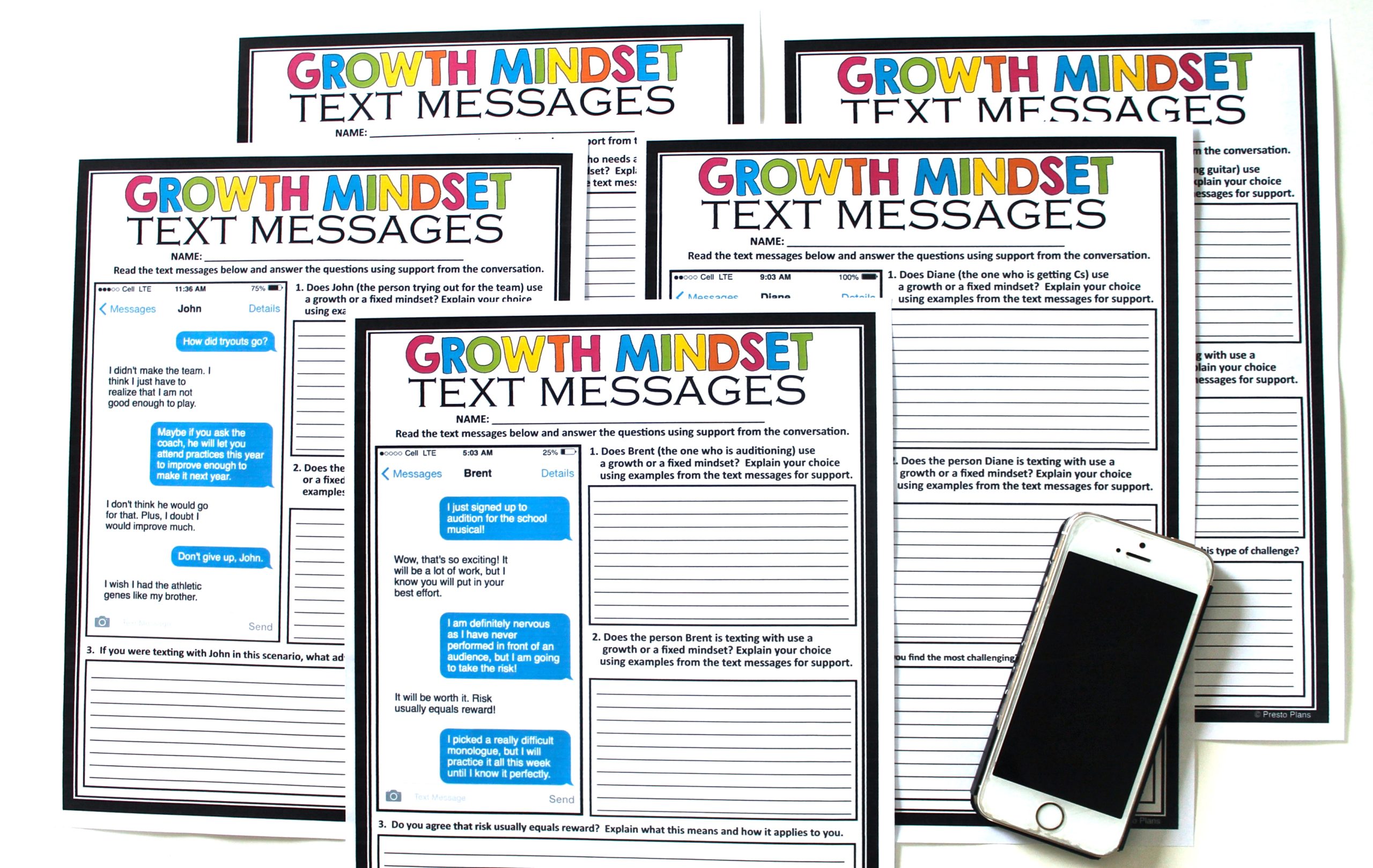
5. Incorporate Challenges
Another way to help students develop a growth mindset is by incorporating daily, weekly, or even random challenges that require students to use or analyze growth mindset. These kinds of activities are meant to encourage resilience, hard work, and dedication. You can implement these yourself by setting up a Growth Mindset Classroom Challenges bulletin board display in your classroom (as shown below).
Here are a few examples of prompts you can use:
- Write a short fictional paragraph about someone facing a challenge who has a fixed mindset. Give the story to a partner to rewrite it to show a growth mindset.
- Some of the most successful and famous people in the world have struggled with hardships. Read about these people and respond to the questions.
- You will be given a quote that is related to growth mindset. Write a short paragraph about what it means to you.
6. Praise Wisely
This last suggestion is straight from the mouth of Carol Dweck, the growth mindset pioneer herself. Dweck advises praising wisely—not the intelligence or talent of your students, but rather their effort, strategies, focus, perseverance, and improvement. Complimenting intelligence can reinforce it as a fixed trait, says Dweck. She advises to “praise the process that they engage in” a technique she calls “process praise” that she believes creates hearty, resilient kids. Students need feedback and praise to shape their learning processes, but just be mindful of the fact that how you go about it has the ability to usher them along the growth mindset path or push them off of it. You can learn more about Dweck’s approach here.
If you would like to grab a ready-to-use bundle with all of the resources mentioned above, you can do so by clicking the button below.
I hope these suggestions help you develop growth mindset in your classroom. Looking for more tips and resources for building classroom community? Click here.
Search the blog for what you are teaching
GIVEAWAYS
sent straight to your inbox!
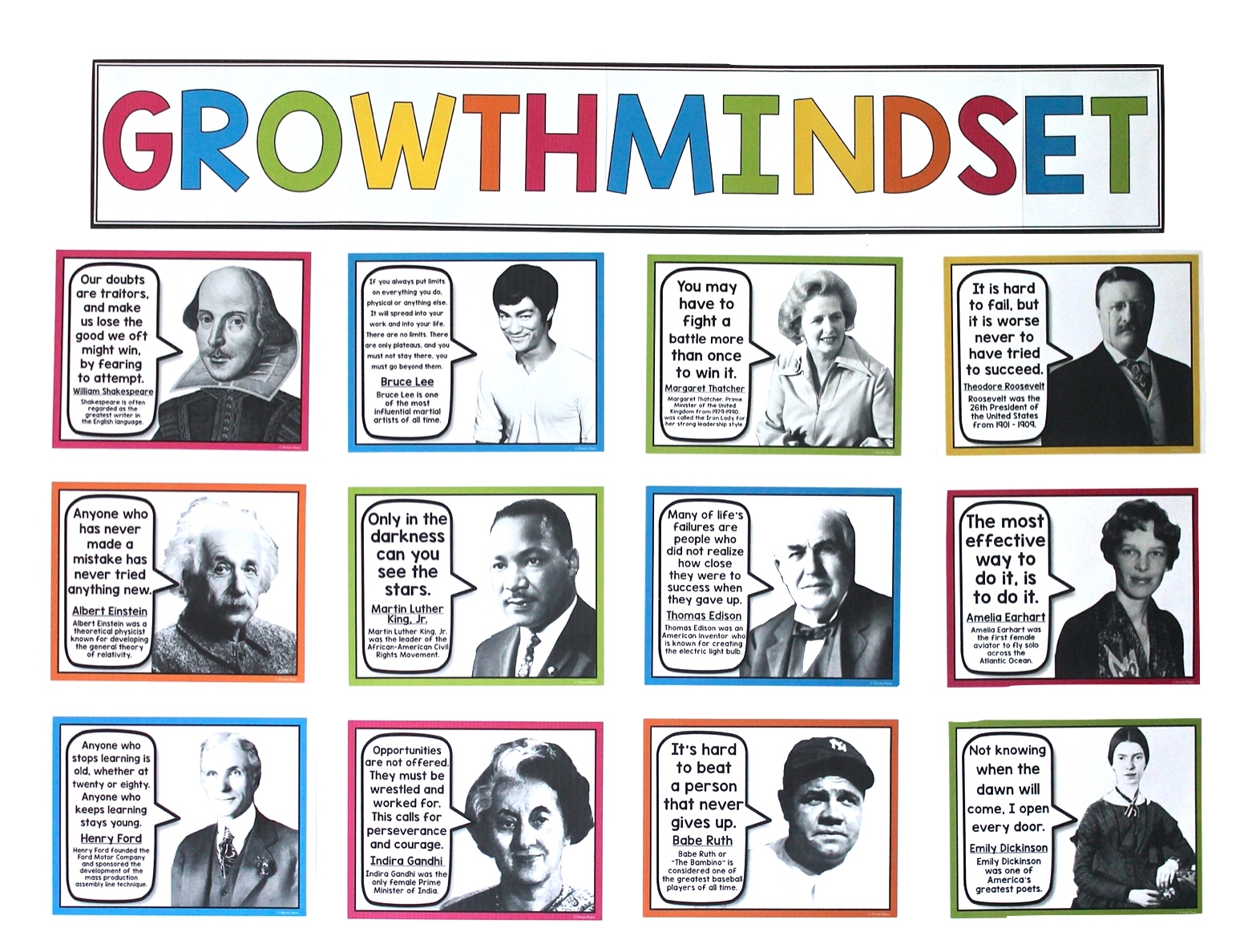
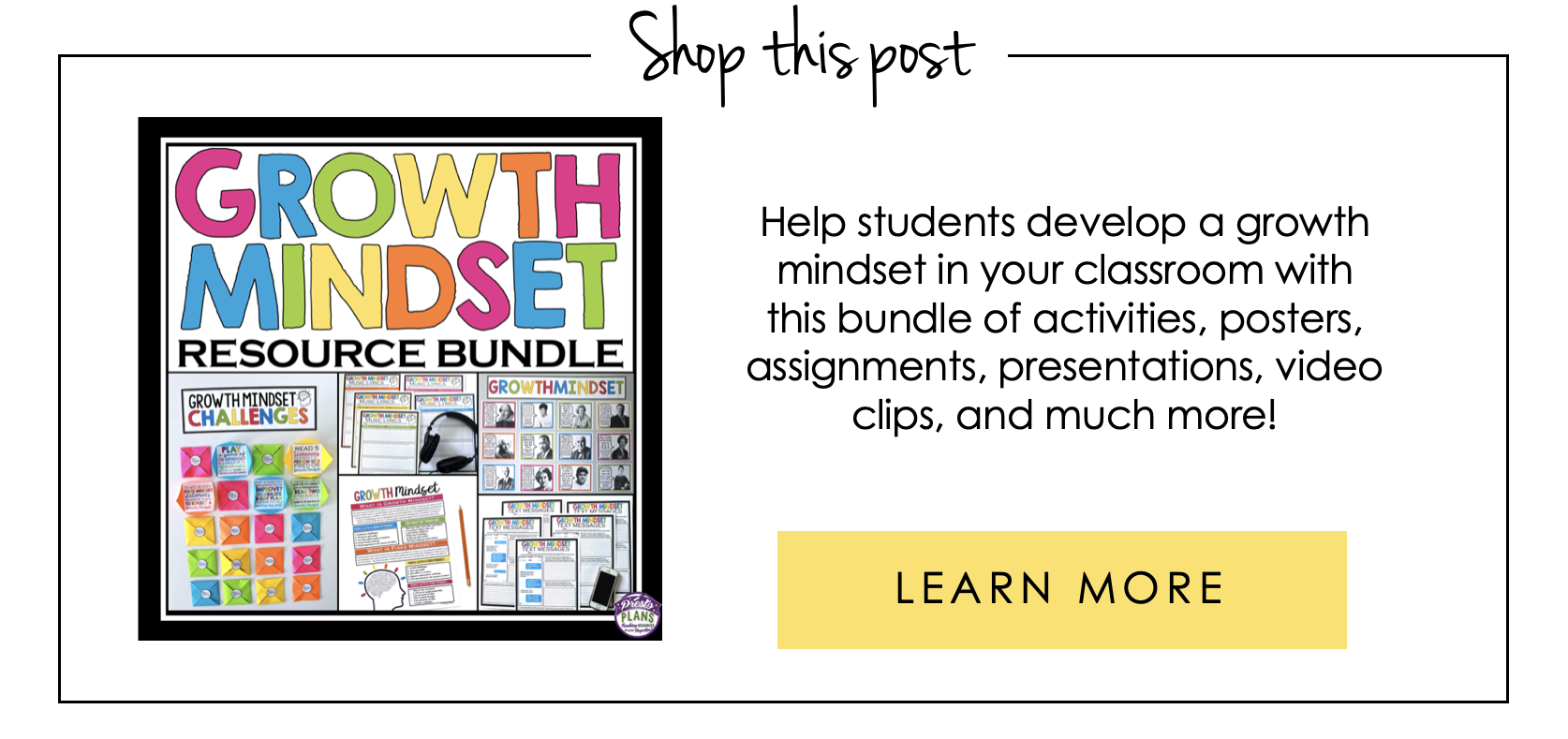
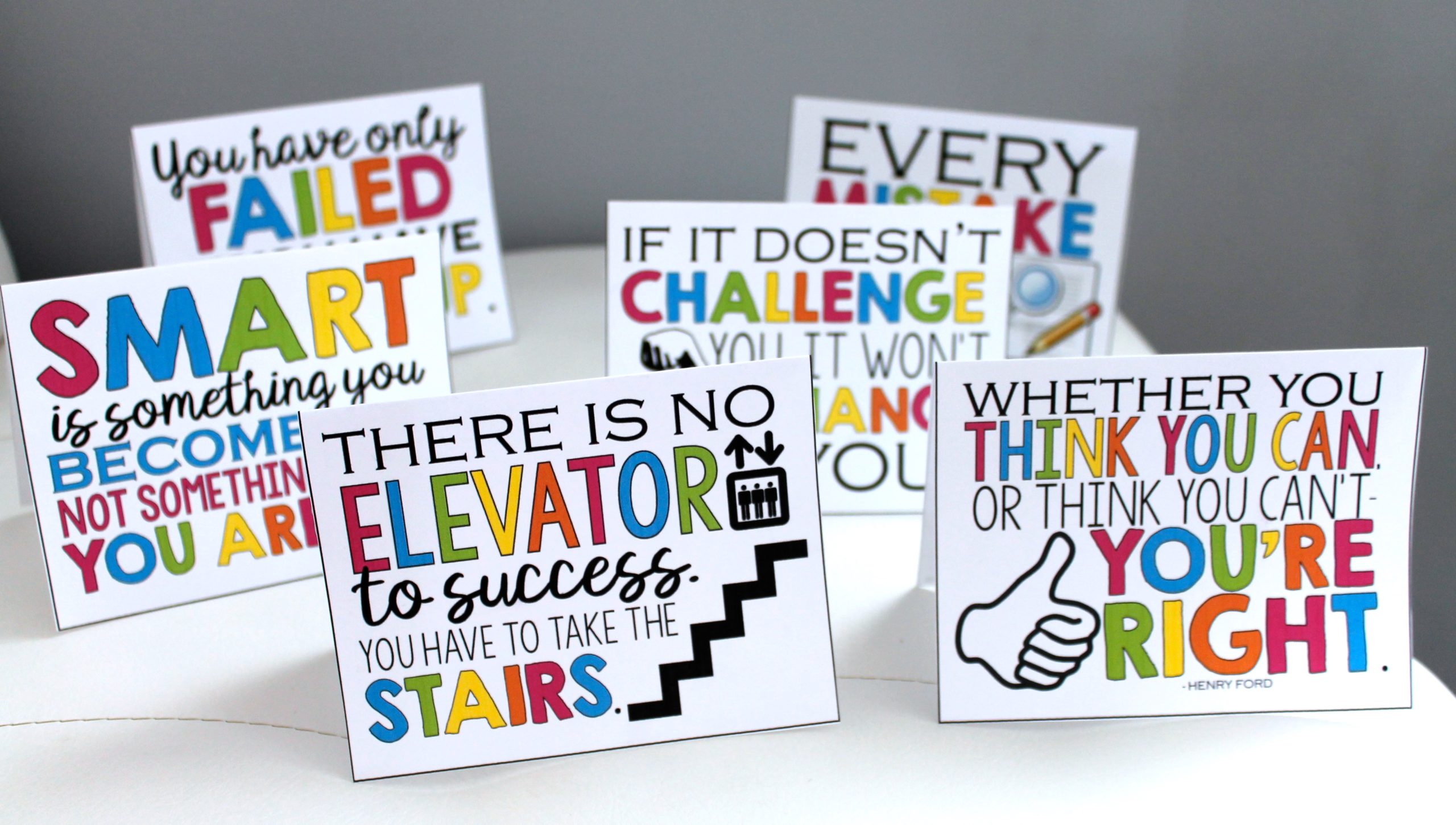
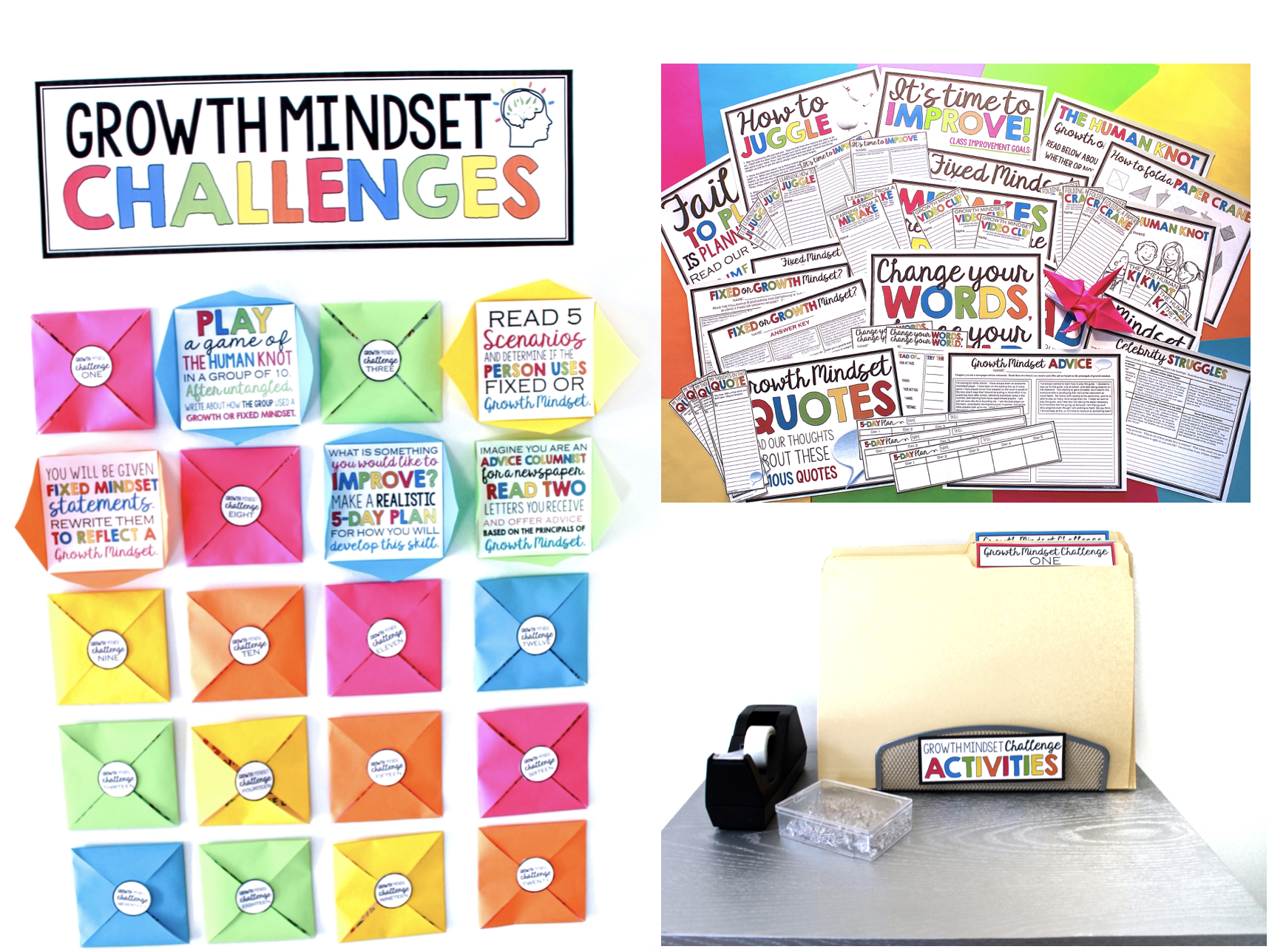
share this post